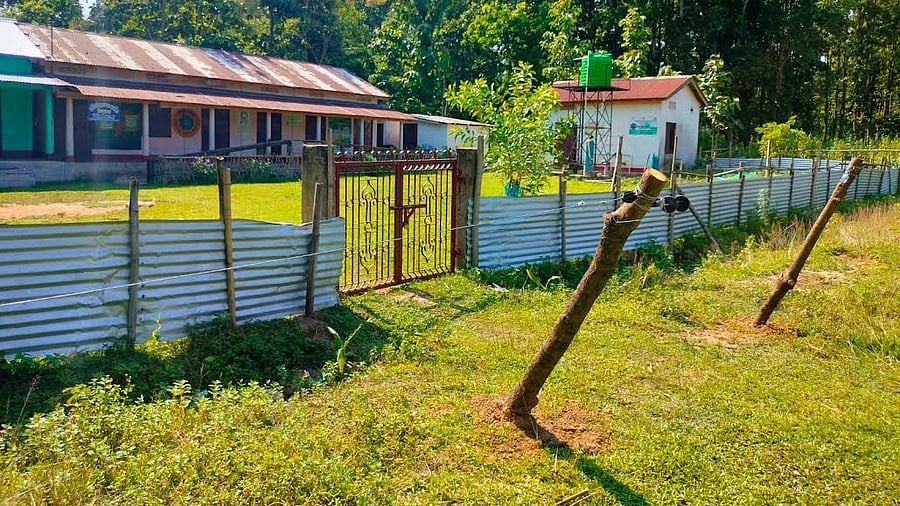
Solar powered fence around a primary school.
Credit: Aaranyak, Guwahati
Guwahati: Rupkanta Duarah is not much worried now about safety of his 90-odd students and disruption of classes when wild elephants come out of the Nambor reserve forest nearby in search of food or water.
"Children used to run away out of fear," said Duarah, the head master of the Kalioni Bagan Lower Primary School, situated in Eastern Assam's Golaghat district.
Surrounded by tea estates and forests, herds of wild jumbos used to be the biggest worry till August 2022 when a 400-meter-long solar fence was installed around the government school. "Now when the elephants comes out, we just swtich-on the solar power station to keep the jumbos away. The fence is now acting as a shield," Duarah said. "The jumbos would have destroyed the school if the fence was not installed," he said.
As the growing problem of wild elephants was found to be destroying school buildings and severely disrupting education, Aaranyak, a biodiversity conservation group, chipped in and installed the solar fence with the help of the Golaghat district administration and the school management committee. Solar-powerd fence emits a mild electric pulse, harmlessly deterring elephants from entering the school campuses and thereby ensuring safety of the schools and the children.
"Powered by solar energy, it is a sustainable, cost-effective measure balancing human and wildlife needs," said Anjan Baruah of Aaranyak.
Growing problem
Human-elephant conflict has become a serious concern in Assam leading to deaths of nearly 100 people and equal number wild elephants in retaliatory actions, every year.
As the communities continue to suffer, Aaranyak installed solar-powered fences around villages, paddy fields and schools in the worst affected districts like Golaghat, Udalguri and Golapara in order to reduce the impact of the growing problem.
The NGO, mostly with the help of State Bank of India Foundation and the US Fish and Wildlife Services, have installed solar fences around at least eight primary schools in the three districts, helping more than 400 children to continue their education without any worry for the wild jumbos, Baruah said.
Thalung Lower Primary School at Kalikhola in Udalguri district in North Assam was damaged by wild elephants several times till Aaranyak similarly installed a 180-meter-long solar fence in September 19, 2024. This provided a shield and helped 30 children to continue uninterrupted education. “A part of the school building that was damaged by wild elephants several years ago has still remained unrepaired,” said Harilal Sarkar, a teacher of the school.
Similar solar-powered fences have become lifelines for six primary schools in Udalguri district: Bhumi Lower Primary School at Khairabari block, No.2 Bholatar Dara Chuba Lower Primary School under Khairabari block No. 331 Nonke Sonajuli Lower Primary School at Sonajuli village, No. 2 Lower Primary School at Teenali division of Budlapara Tea Estate and No. 2 Tankibasti Lower Primary School. The Kashibari Kochpara Lower Primary School having 24 students in Goalpara district, too have been similarly provided with the solar shield against wild jumbos.